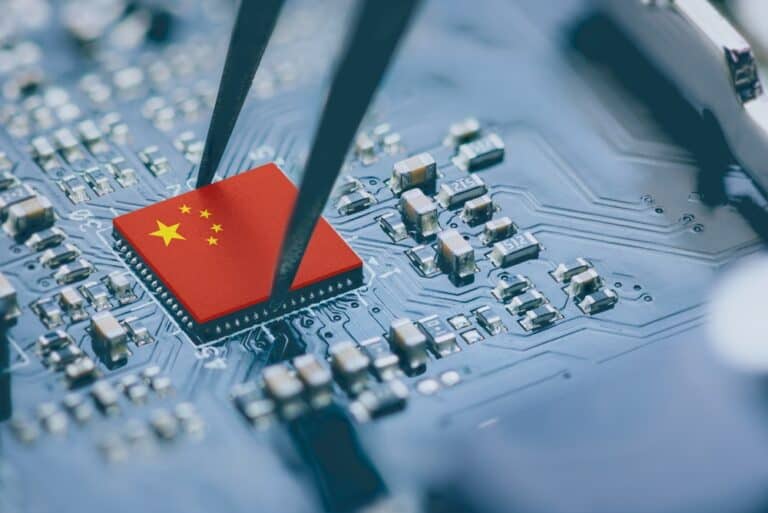While the EU and US are pouring tens of billions into their own chip production, China has much bigger ambitions. A blockade on the sale of machinery for chip manufacturing should curb Chinese development, but Huawei is forming plans to circumvent it. In time, China’s chip production may well stand head and shoulders above the rest.
A worrying piece of news comes from Bloomberg: Huawei is reportedly working on a secret network of factories for chip production, or “fabs”. Through independent-looking middlemen, it could still obtain Western chip machines despite ongoing export restrictions. Indeed, Huawei has been on the “entity list” in the U.S. since 2019 and is also prohibited from purchasing products from the Dutch ASML, for example. However, US companies are still selling machines meant for older manufacturing processes, such as 28-nanometer.
Bloomberg polled the Semiconductor Industry Association (SIA) for comment, a organization comprising of members such as Nvidia, Intel, Micron and Western Digital, among others. The group warns that Huawei alone has $30 billion worth of funding coming from the Chinese state. With that, the company looks set to become a domestic chip production powerhouse. SIA identified five facilities that Huawei operates under other company names.
In total, China is said to be willing to spend $100 billion through 2030 to beef up its own chip production. However, it is not entirely clear whether these are subsidies without consideration or loans. Still, it is a worrying development for anyone hoping that Europe and the U.S. will become long-term leaders when it comes to chip production.
National security
Export restrictions from the West have continuously been framed as a matter of national security. Huawei, for example, has been banned for the same reason, resulting in the removal of 5G transmission towers in European territories. That company is a complete no-go for US-based companies, which led to Western Digital getting fined $300 million earlier this year.
But those with national security in mind really shouldn’t be facilitating chip manufacturing at all for countries they do not fully support. After all, a chip on a seemingly obsolete process can still be very useful for military tools, cars and industrial equipment.
Whether you explain export restrictions as a security risk or not: at the end of the day, this is about protecting one’s own competitiveness. In that respect, both Europe and, to a lesser extent, the U.S. have some problems.
Europe: a modest amount for a big catch-up
There are somewhat positive developments surrounding European chip production, though: Intel, TSMC, NXP and Bosch have the green light for their plans to build factories. Germany in particular and also Poland can hope for a rise of their interior chip industry. In addition, Europe is already a leading supplier of chip manufacturing machines with ASML as an internationally renowned player.
However, if the roughly $100 billion amount of Chinese state aid is correct, it shows that the EU is being rather skimpy by comparison. The figure amounts to 92.4 billion euros versus the 43 billion set aside by the EU Chips Act. The European goal is achieving a 20 percent global market share, but in the face of China’s imminent rise and similar investments in America, it remains to be seen whether that is achievable. At least, with the current level of investment.
The U.S.: where is the money?
The European Chips Act was not the first of its kind: America was almost a year earlier with the CHIPS Act. The investments are for a variety of purposes, with $52.7 billion (€48.7 billion) intended for chip production. Among others, TSMC, Intel, Samsung are getting started with factories in Arizona, while Ohio, New Mexico, Texas and New York are also states where chips will be baked.
Given the better current competitive posture of the U.S. compared to Europe, it is not too surprising that the investments there aren’t much larger. Yet it is likewise questionable whether it will be enough. Another problem: chip companies are still waiting for government funds. Authorities are still dragging their feet when it comes to approving grants, putting the deployment of new factories at risk.
All this makes the ambitious plans of Intel Foundry Services in particular questionable. That company’s problems on other fronts have already forced it to cast aside numerous divisions. It hopes to supplement the cost savings with money from deals with Arm, for example, which will have chips baked in Intel facilities. However, Intel’s financial picture is so worrisome that experts at SiliconANGLE’s The Cube podcast wonder aloud whether the chip giant will survive. Combined with the catch-up it needs to do in the field of AI hardware, it’s got a lot on its plate. Overall, it’s a major player in the global picture of Western chip production plans, so downsizing these initiatives could have very negative effects on the level of competitiveness in two continents.
After all, if China also gets past the export restrictions, Europe and America have a battle on their hands.
Read also: These are the plans for European chip production
